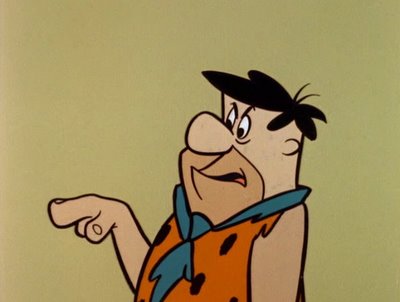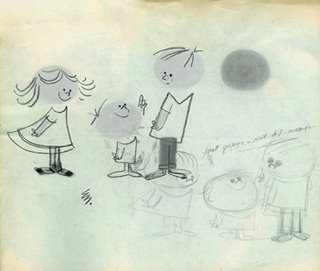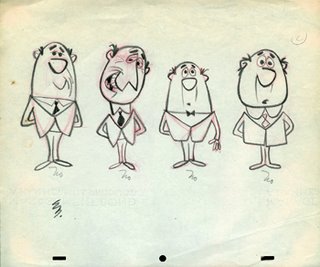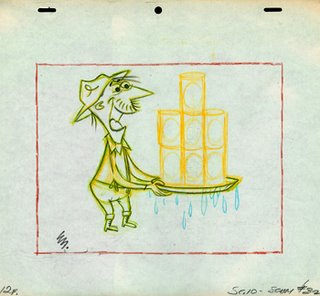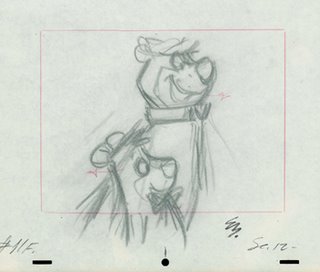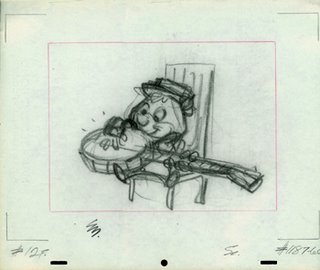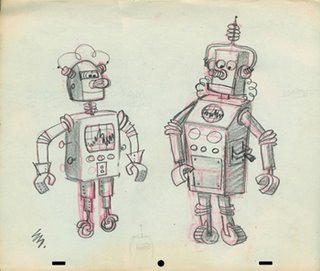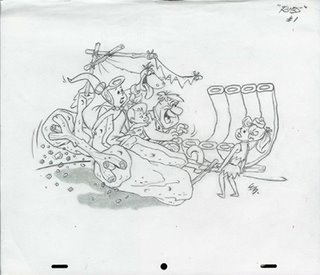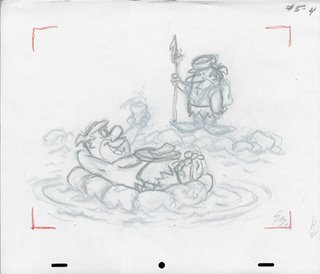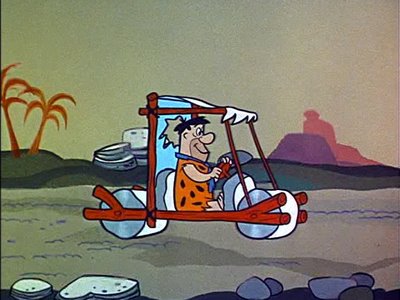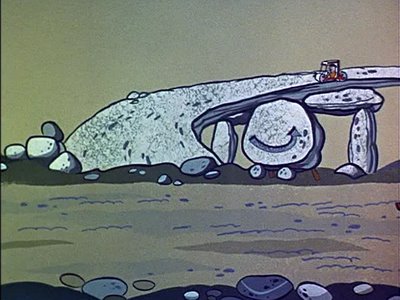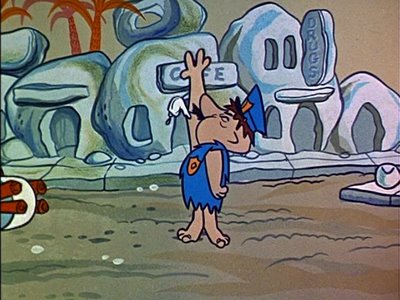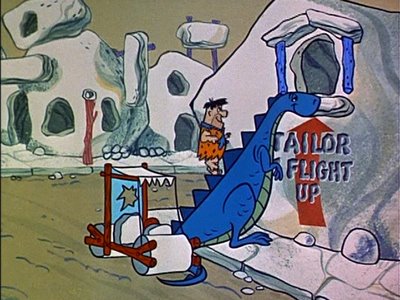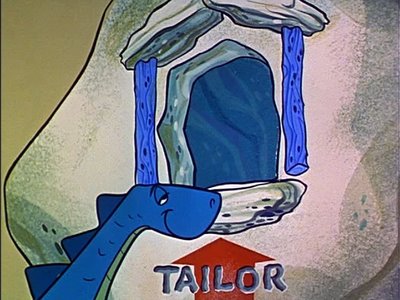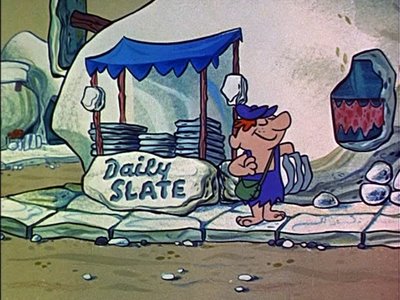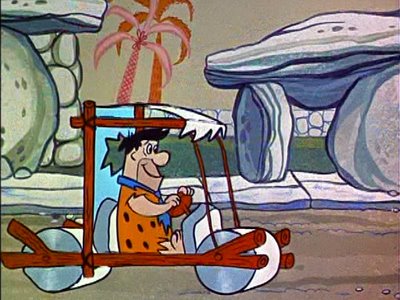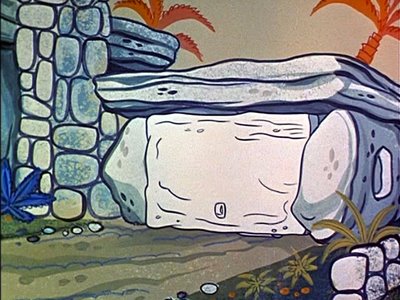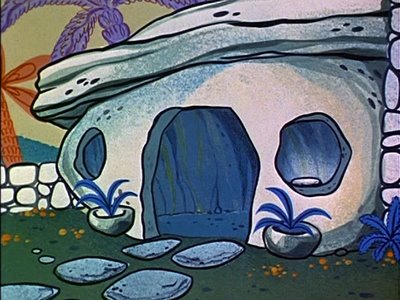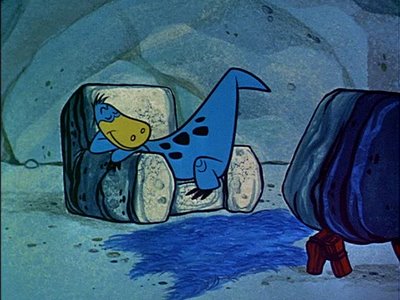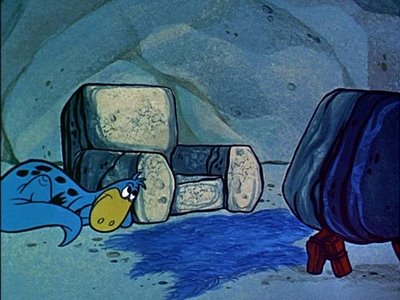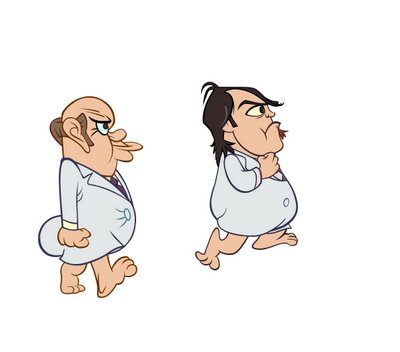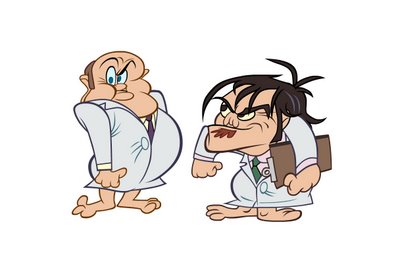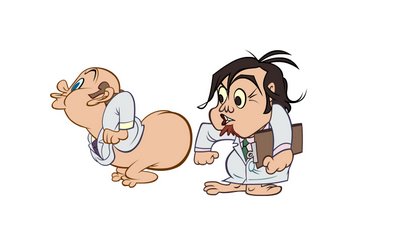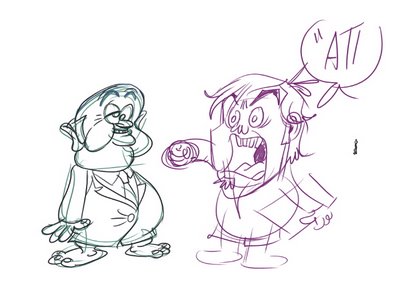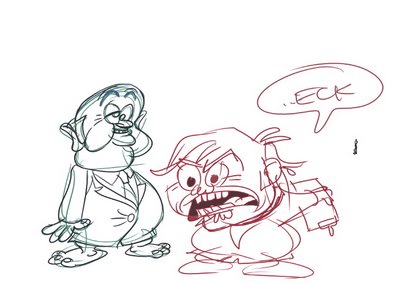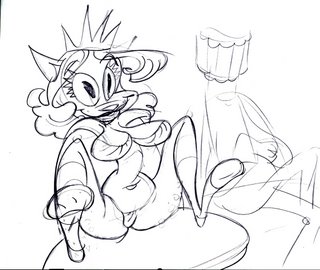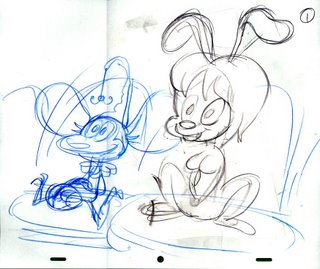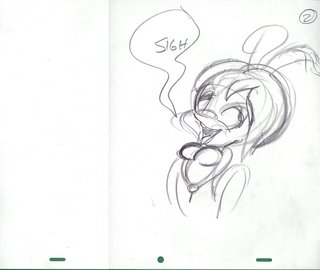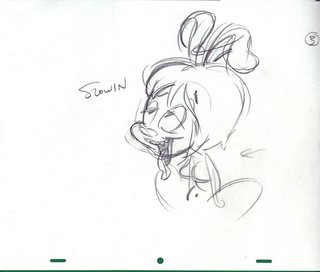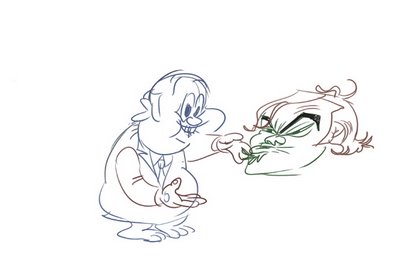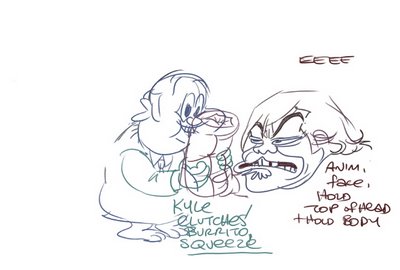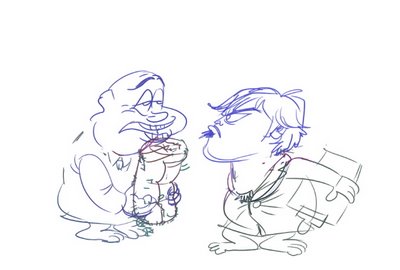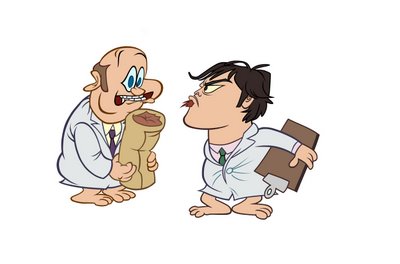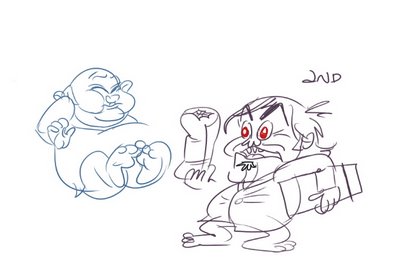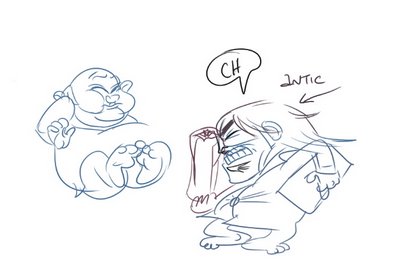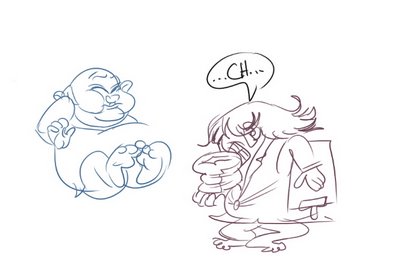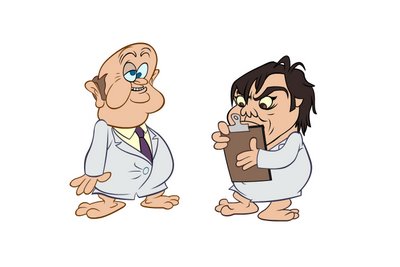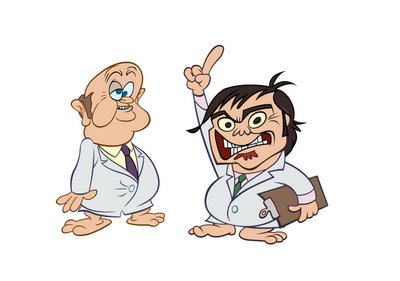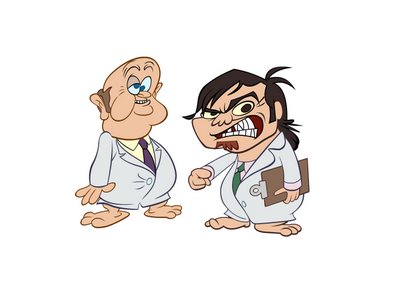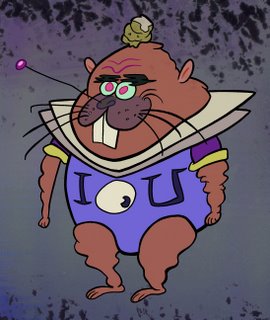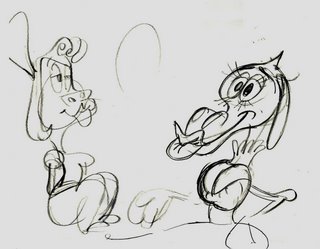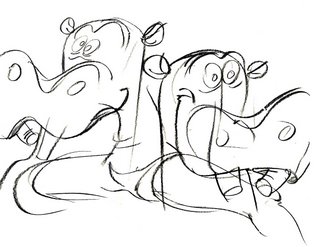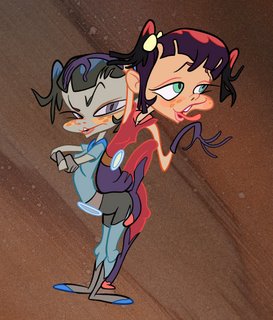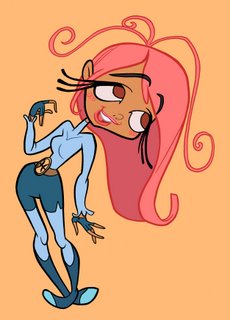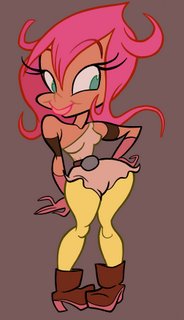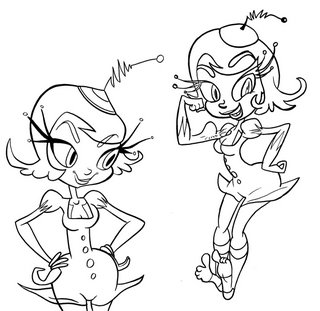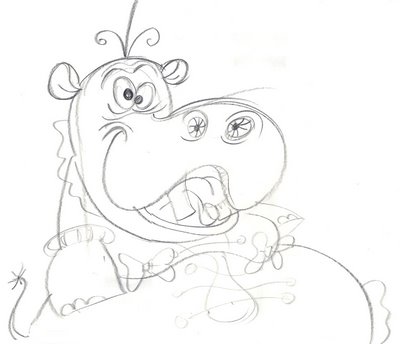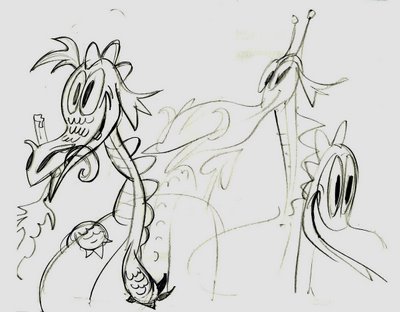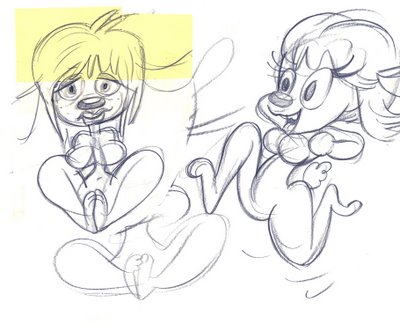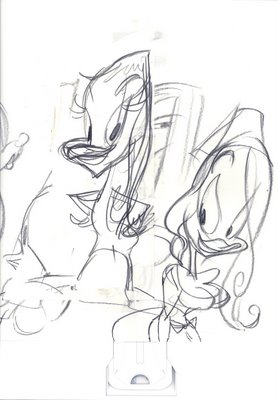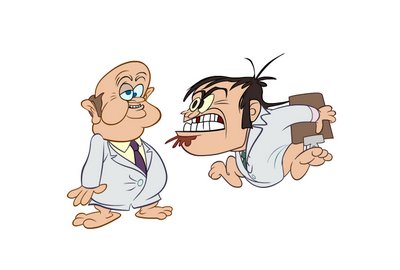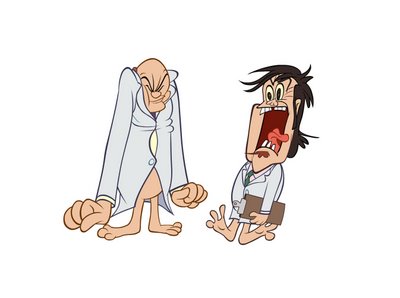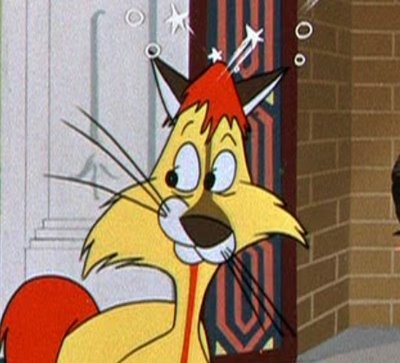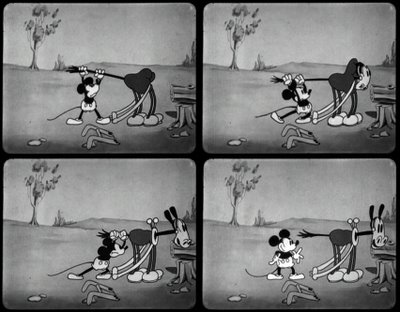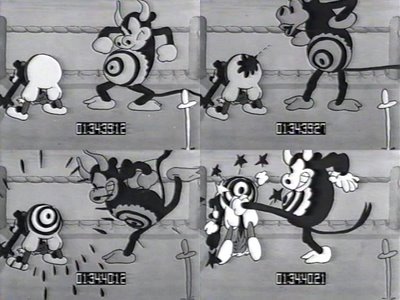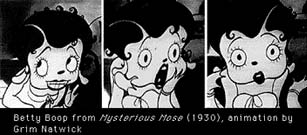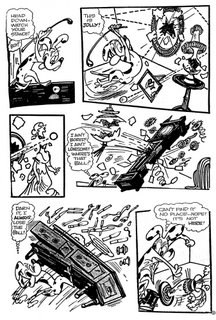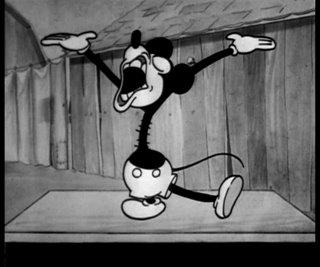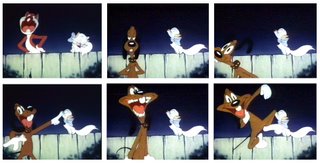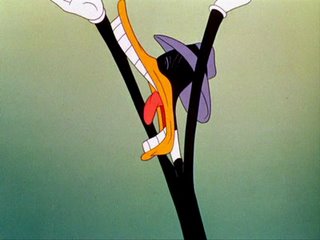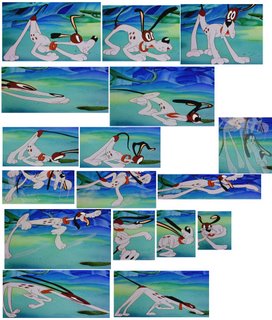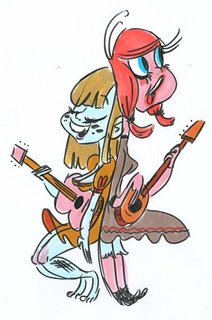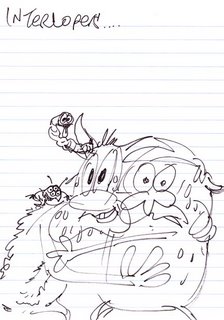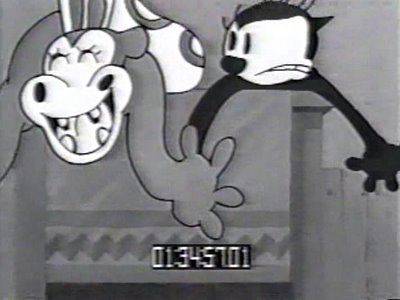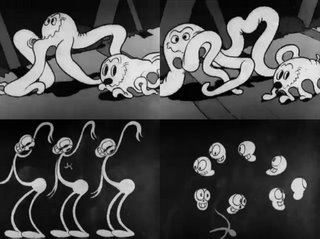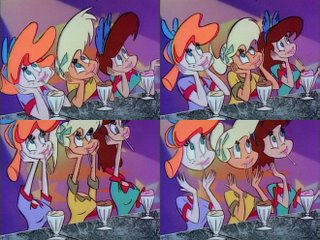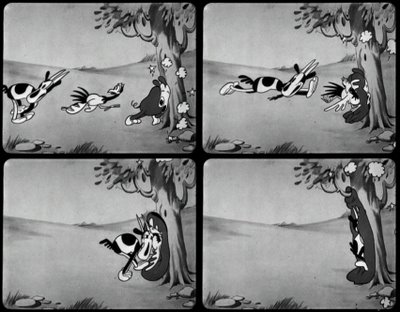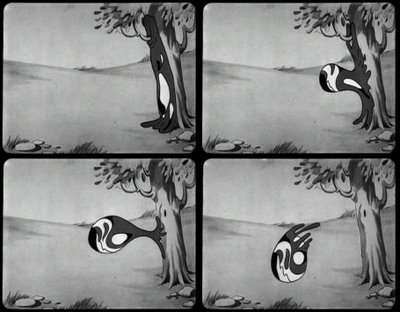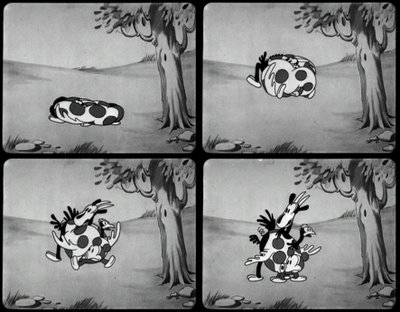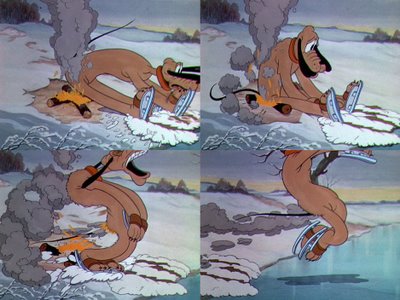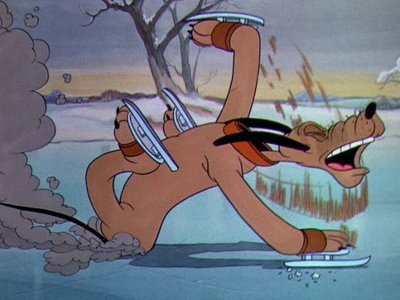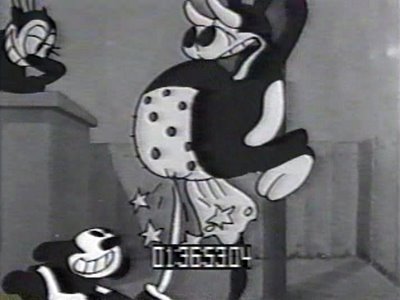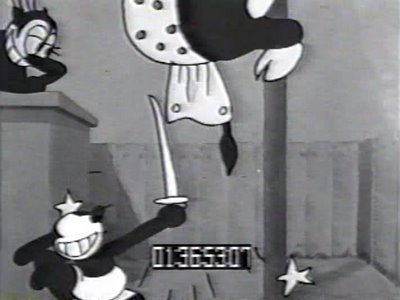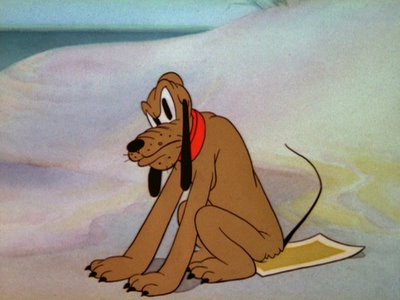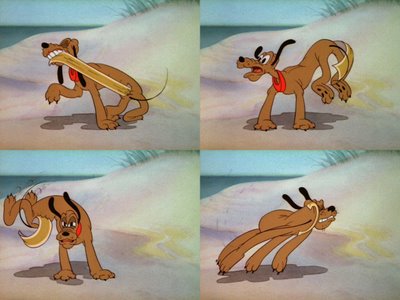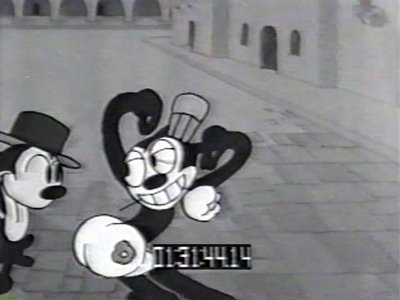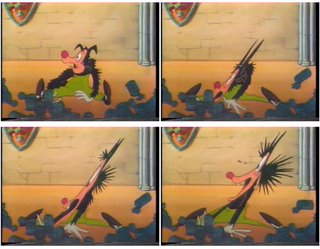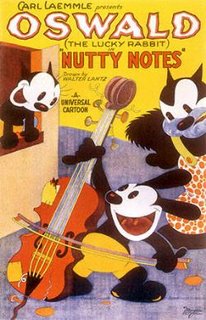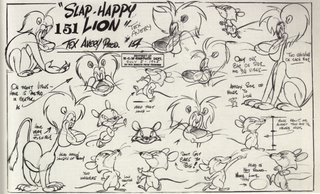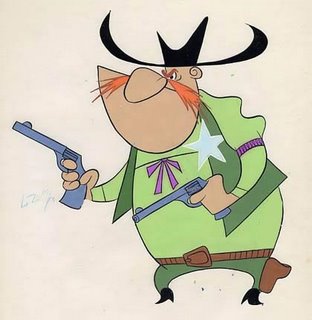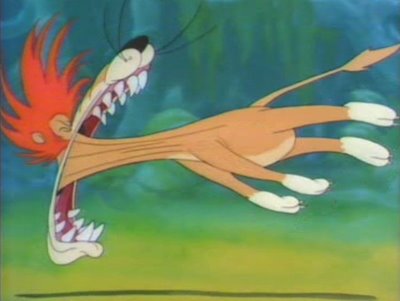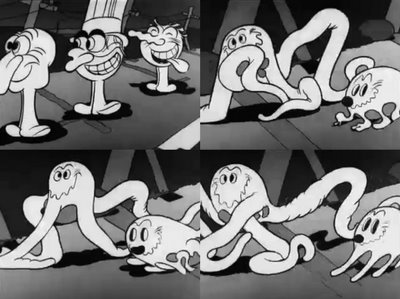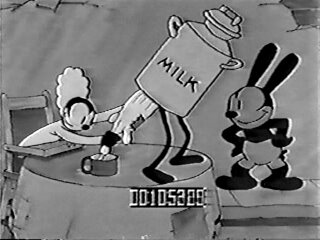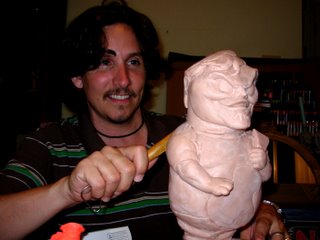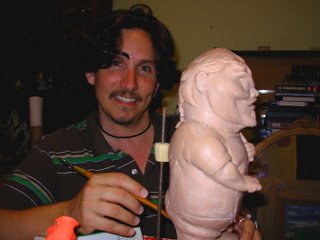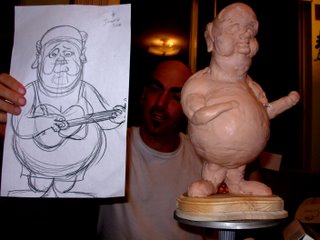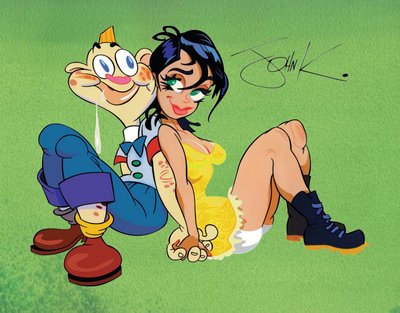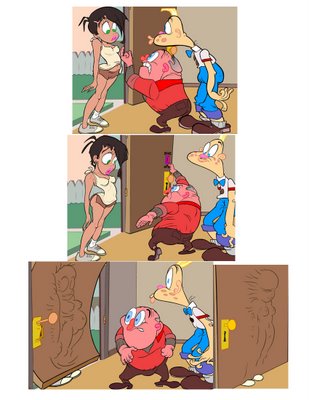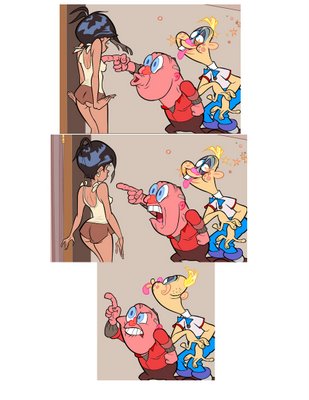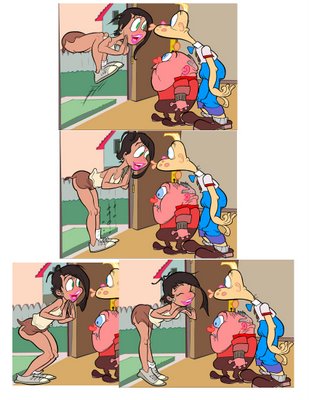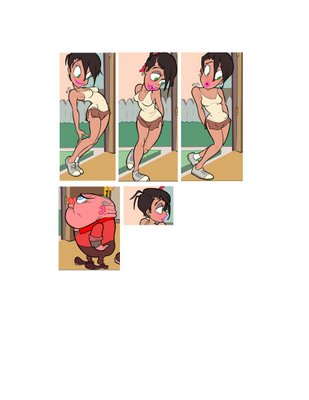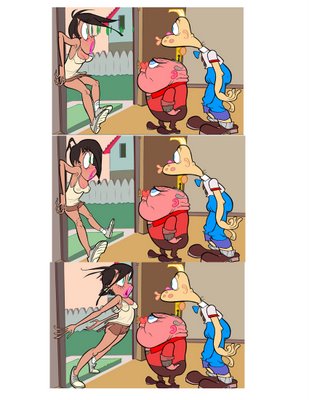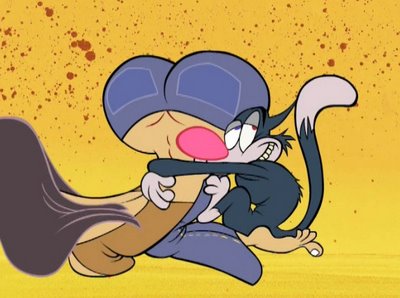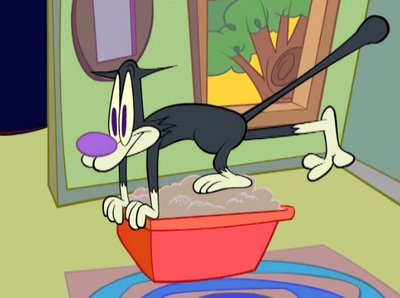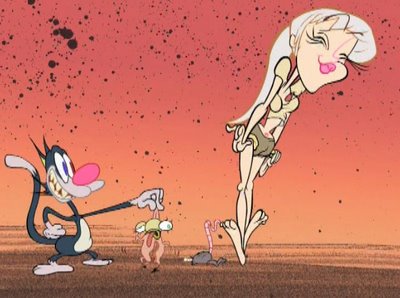The Flintstone Flyer - Carlo Vinci
Hi folks, the frame grabs and clip here aren't really good examples of what I talk about in this post. We just haven't had time to grab them all yet. If you have the cartoon go watch it!

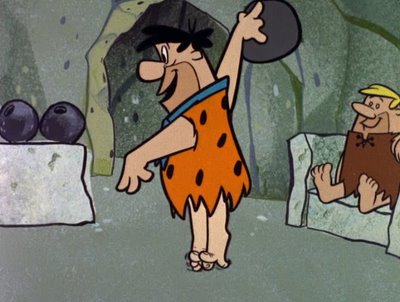
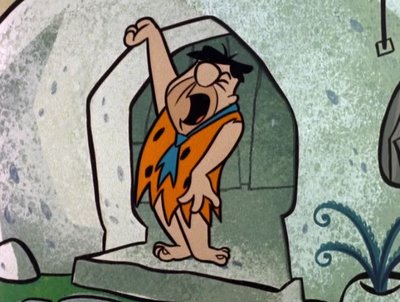
Marc and Marlo and I were watching 1st season Flintstones the other night, looking for clips and frame grabs to honor Ed's memory and I noticed something that never quite struck me before.
We watched The Flintstone Flyer-the one where Barney invents a stone age helicopter and Fred thinks it's worth millions so he partners with Barney and of course they screw everything up.

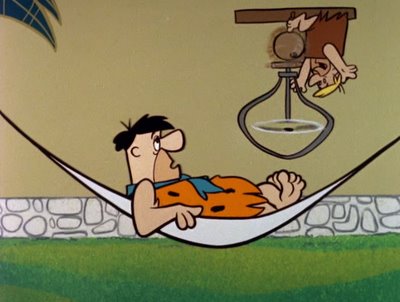
The plot is a perfect combination of a live action sitcom and a cartoon. It's mostly sitcom but has many cartoon reactions and impossible things that for some reason you just accept, even though Fred and Barney are basically adult human characters.
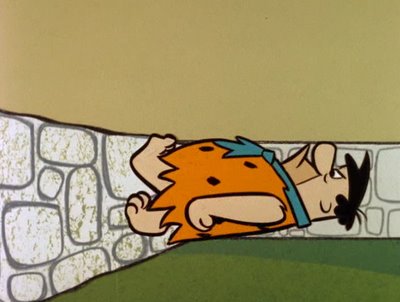
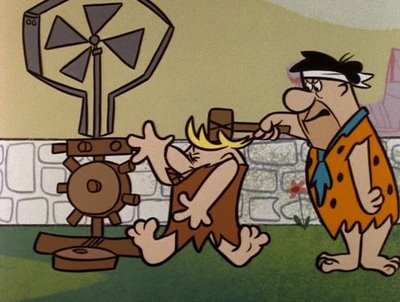
The whole episode is animated by one guy-an amazing feat!
Carlo Vinci was an animator at Terrytoons for almost 30 years before he left to join Hanna Barbera at MGM studios in the late 50s. When Bill and Joe opened up their TV studio in 1957/58 Carlo went with them. Incidentally, Carlo was the one who taught Joe Barbera to animate in the early 1930s!
This is the crazy thing I noticed about Carlo's work while watching The Flintstone Flyer. I know his work really well. He did great unique full animation at Terrytoons for decades. The directors always gave him the difficult scenes. His specialty was animating dancing, which for most animators is really hard. Carlo must have animated 1,000 intricate dances during his time at Terry. He also animated all those sexy little girl mice that tried to seduce Mighty Mouse. He used really unique gestures and poses-sort of awkward unbalanced poses and the characters' wrists always bent in opposite directions. He didn't ever rely on whatever the current style of posing and expression was for each decade, as the Disney and Tom and Jerry animators did. However there is a really big difference between what he did for Terry and what he did for HB.
Terrytoons were fully animated, using from 12 to 24 drawings per second - luxury animation by today's standards. Hanna Barbera of course used severely "limited animation" which averaged maybe 4 drawings per second after you figure in all the reused cycles and dialogue scenes.
You would think this restriction on the quantity of drawings would restrict the quality of the cartoon and usually it does but when you watch the Flintstone Flyer (and other 1st season Flintstones) you will see something that hardly ever happened in classic fully animated cartoons-not during the Golden Age and certainly not now in the huge budgeted animated features churned out by the big 3 studios.
Natural, believable acting:
Fred and Barney act like real people. They make expressions that real people do. They have head and hand gestures that perfectly describe how they are feeling at every unique moment in the story.
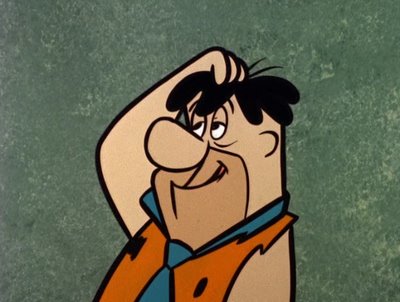
Carlo doesn't rely at all on stock animation acting. He animates the Flintstones as if he were animating his friends and neighbors from down the street. This is an incredible feat! We take it for granted because the Flintstones just seem real and we instantly accept it, but considering how animators were trained to animate acting in very unnatural styles for decades, it's amazing that an animator can just break out of habit and animate a new style and using far fewer drawings! At Terrytoons he was never called upon to do any real acting.
I can tell you I know from 20 years of experience that very few animators can draw natural expressions or draw in different styles. Disney animators draw Disney expressions and animate Disney gestures. I used some Disney animators or Cal Arts animators on various projects-including Ren and Stimpy and they just couldn't draw the characters. They kept turning them into Disney/Cal Arts characters-they would draw the eyes like Don Bluth and use the same expressions they had already drawn a thousand times before that no one ever complained about. "No no!" I'd say, "This is Ren, not Mowgli! He isn't constructed like that-his eyes are a different shape and he has a different personality!"
2 exceptions were Mark Kausler and Greg Manwaring who did great funny and specific animation for me.
And of course, Bob Jaques and Kelly Armstrong always do fantastic custom animation. But these people are rare.
So for me to watch an early Flintstones and be laughing all through it at the funny acting and reacting of these completely believable characters is very impressive.
An interesting elaboration: I know many animators who themselves have really funny unique mannerisms and I always try to encourage them to put them in their cartoons. You would think this would be an easy and natural thing to do. It isn't. Hardly any animators can draw what they actually feel. As soon as they sit down to animate, they jump to a different part of their brain that stores all their animation knowledge. They summon up poses and gestures and moves that they have done a million times, then actually act out a standard generic "cartoon" expression with their face, rather than just draw how they themselves act in real life. You know those famous photos of Disney animators looking in mirrors and making wacky expressions as they draw? This is publicity designed to make you think they act everything out naturally first, then copy what they see in the mirror.
It's actually the opposite situation. They act everything out as if they were already animated cartoon characters themselves, rather than specific humans. Watching grown men act like Mickey Mouse is the weirdest thing ever.
Carlo Vinci was a middle aged fat guy when he animated the Flintstones. A regular kind of guy who drank beer, watched football, lusted after pretty girls. He probably knew all kinds of characters in real life and used his observations of them in these super low budget cartoons.
The Flintstones is to me by far the best animated sitcom in history. The characters are completely believable. The animation is customized and not predictable as even most full animation is. The acting is funny, many of the story situations are funny, the designs are beautiful and they still have room left over for cartoon jokes.
Oh and of course the voices are great-in those days they used real voice actors, people from radio, who had to have distinct sounding voices and great acting and delivery. That certainly helped the animators.
The Flintstones blows away the excuse I hear over and over today for why TV animation is so bland. The excuse of not enough money. Todays' prime time animated sitcoms have more money than God and should put some of it towards the drawings and animation.
